Have you ever wished that algebra was more concrete and even hands-on? Maybe we can make it that way! Here’s an easy way to teach the distributive property with LEGO bricks.
This math lesson is part of our Hands-On Algebra Series. I’ve been working on ways to teach pre-algebra and algebra concepts with manipulatives (LEGO bricks, but I’ll also show you some simple alternatives). This can be so helpful for students who are having a hard time really grasping what’s happening.
In this particular activity, the LEGO bricks will provide a bridge between the concept of distribution and the symbolic algebraic notation used. LEGO bricks are much less threatening than variables!
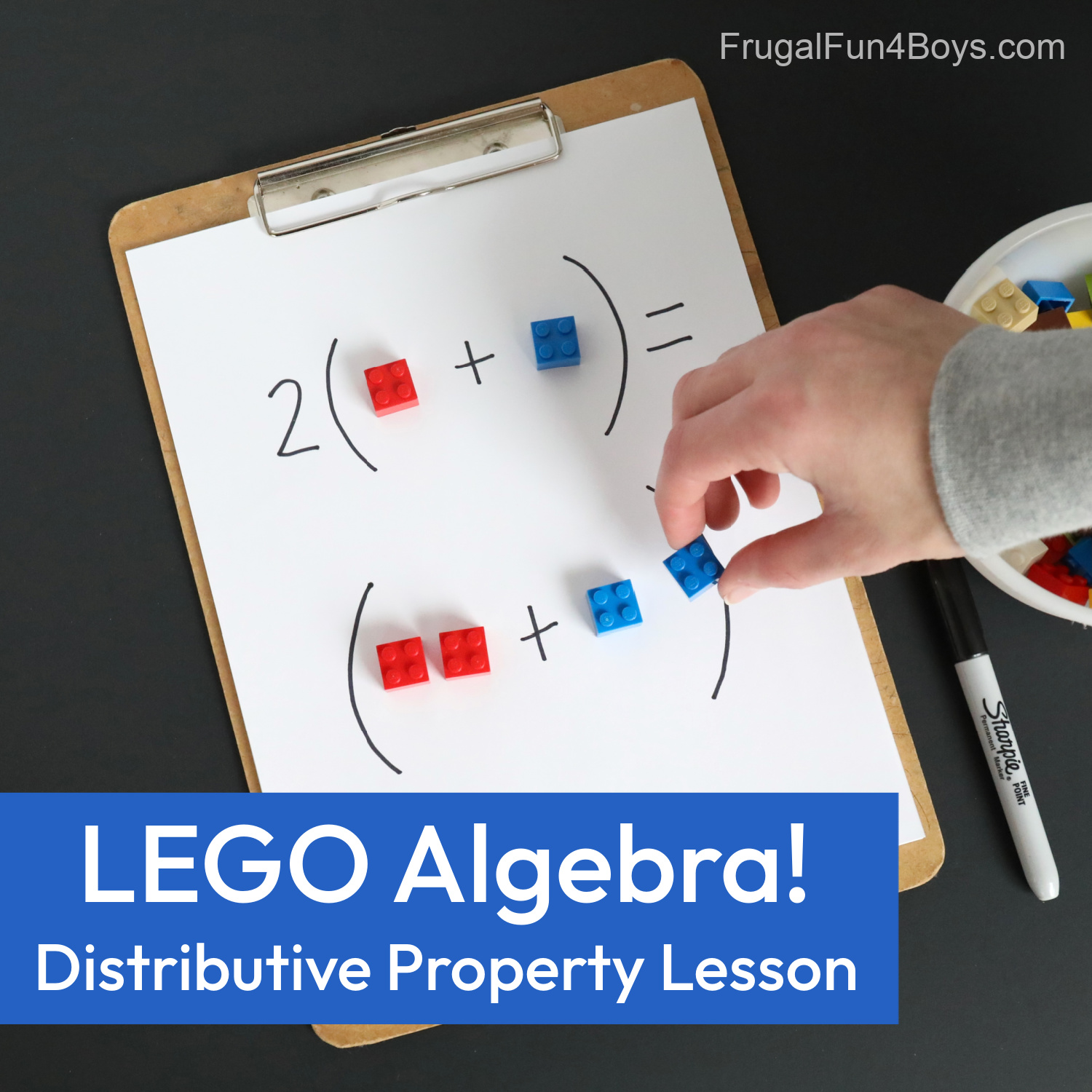
Supplies Needed:
- Paper
- A pen or black marker
- Plenty of 2 x 2 LEGO bricks
If you don’t have access to LEGO bricks, this activity works well with any small colored object. Try using buttons, pom pom balls, Fruit Loops cereal, coins, or mini erasers.
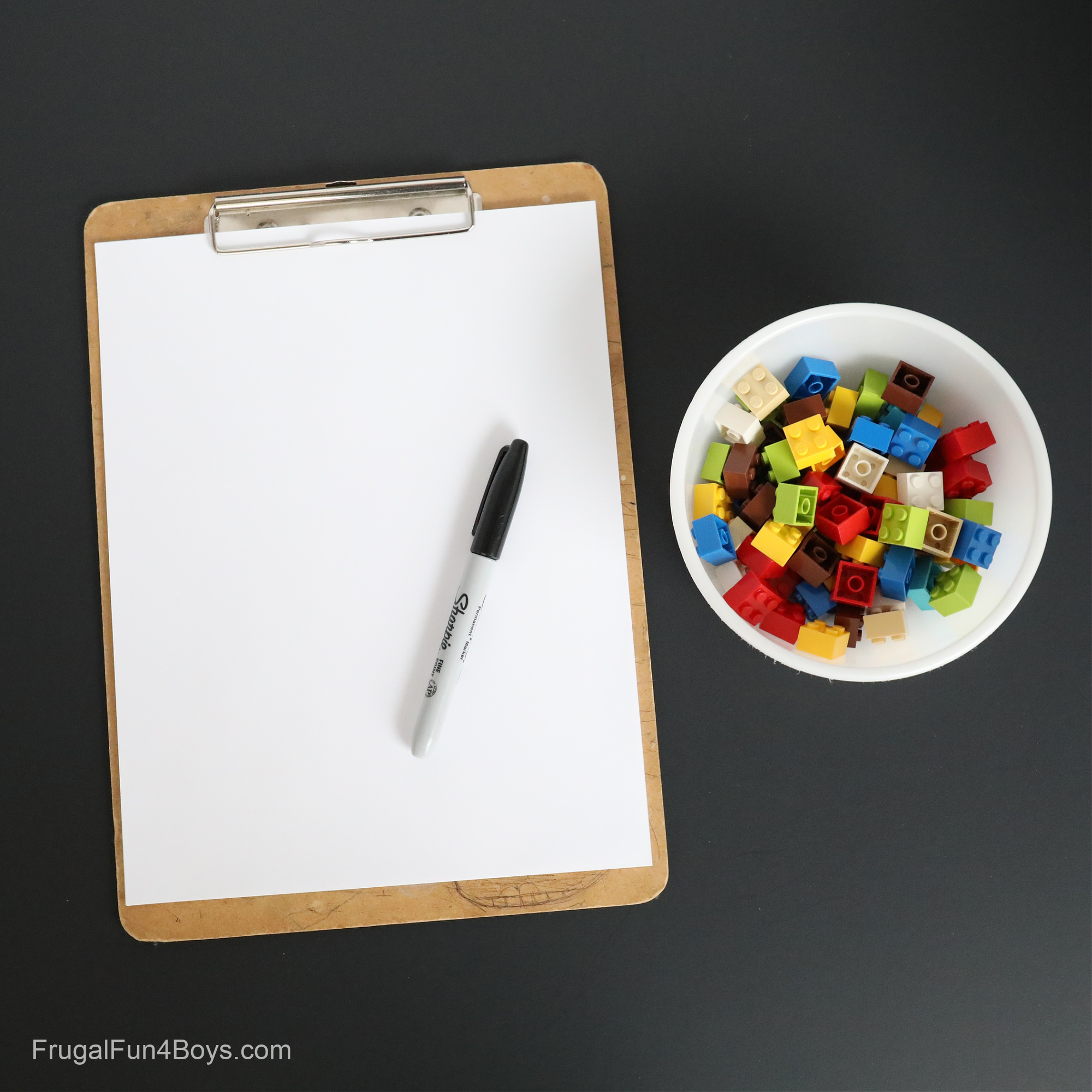
What is the Distributive Property of Multiplication?
The distributive property of multiplication says that if you have two addends in parentheses that are multiplied by another number, you distribute the number outside of the parentheses by multiplying it by each of the addends.
For example, 4(5 + 8) = (4 x 5) + (4 x 8) = 20 + 32 = 52.
Now, it seems like it would be easier to just add 5 + 8 and get 13, then multiply 13 x 4 to get 52. And it is. But soon, students will have variables inside the parentheses, and then the terms cannot be added because they are not like terms. The distributive property is very useful in these cases.
Set Up the LEGO Distributive Property
Draw some parentheses, and choose a number to put outside them.
It works well to start with just two bricks inside the parentheses. I did red + blue.
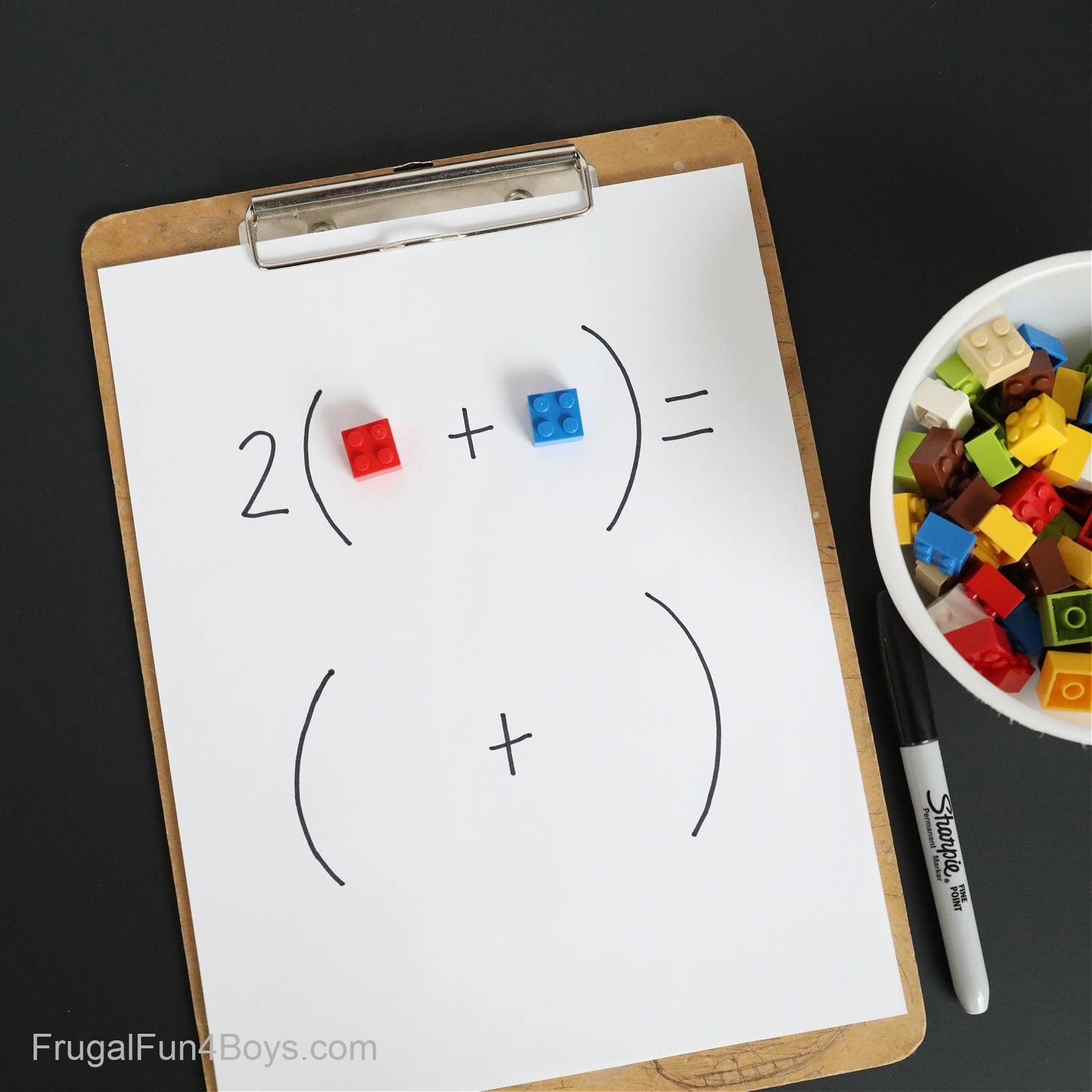
To solve, we will multiply 2 x red and 2 x blue.
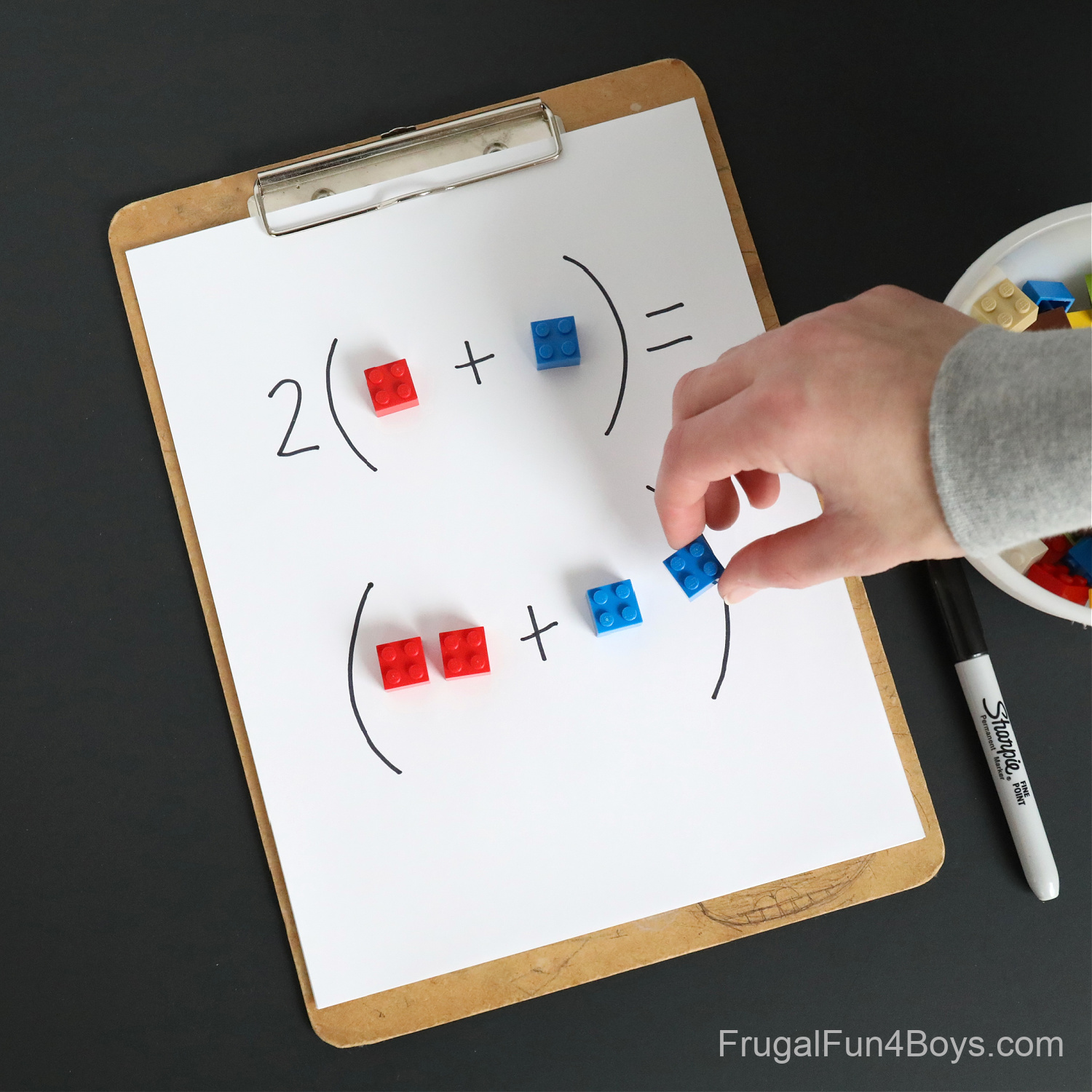
Let’s try a harder one. How do you distribute in this case?
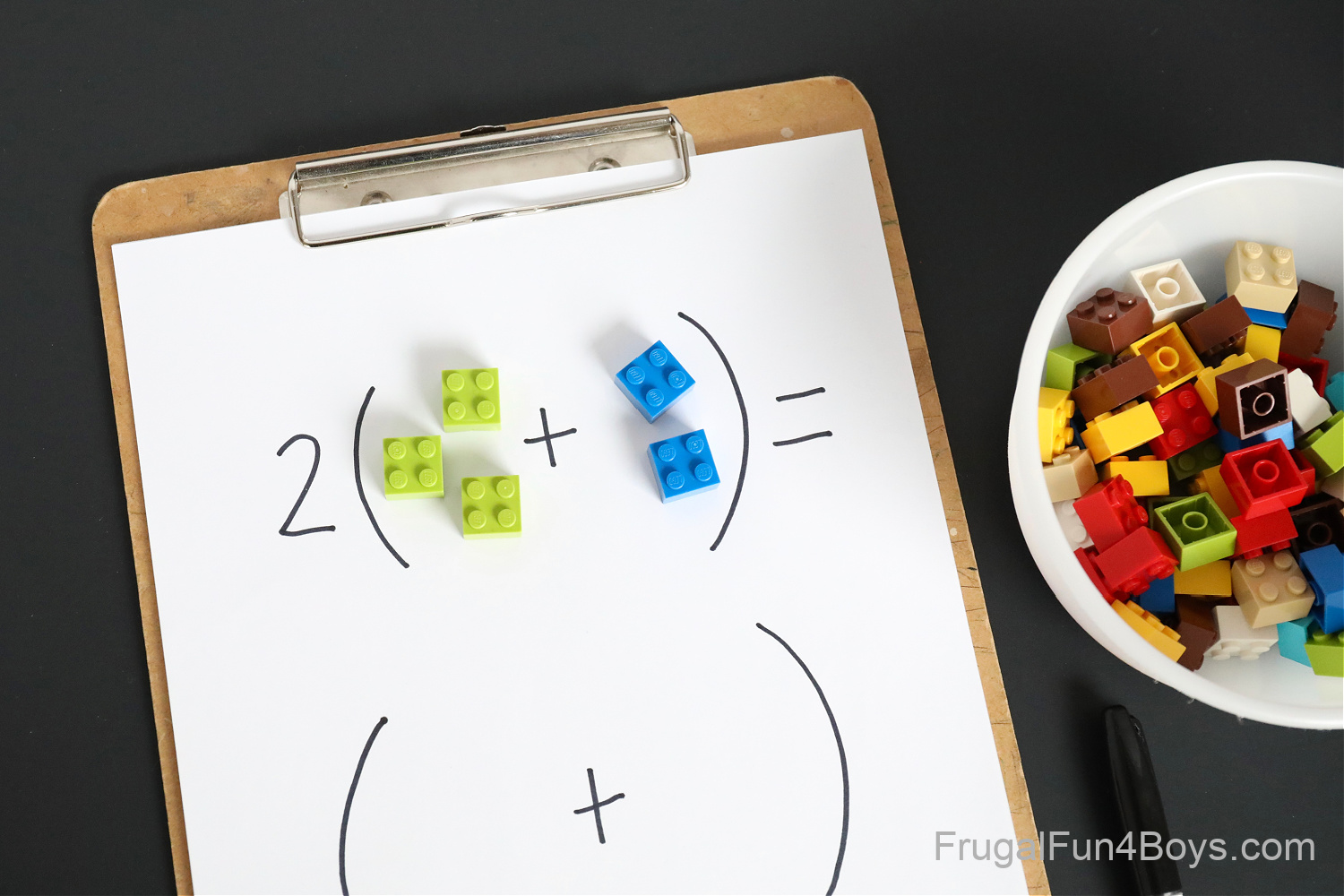
We’ll multiply 2 x 3 greens. Then we’ll multiply 2 x 2 blues. That gives us 6 greens and 4 blues.
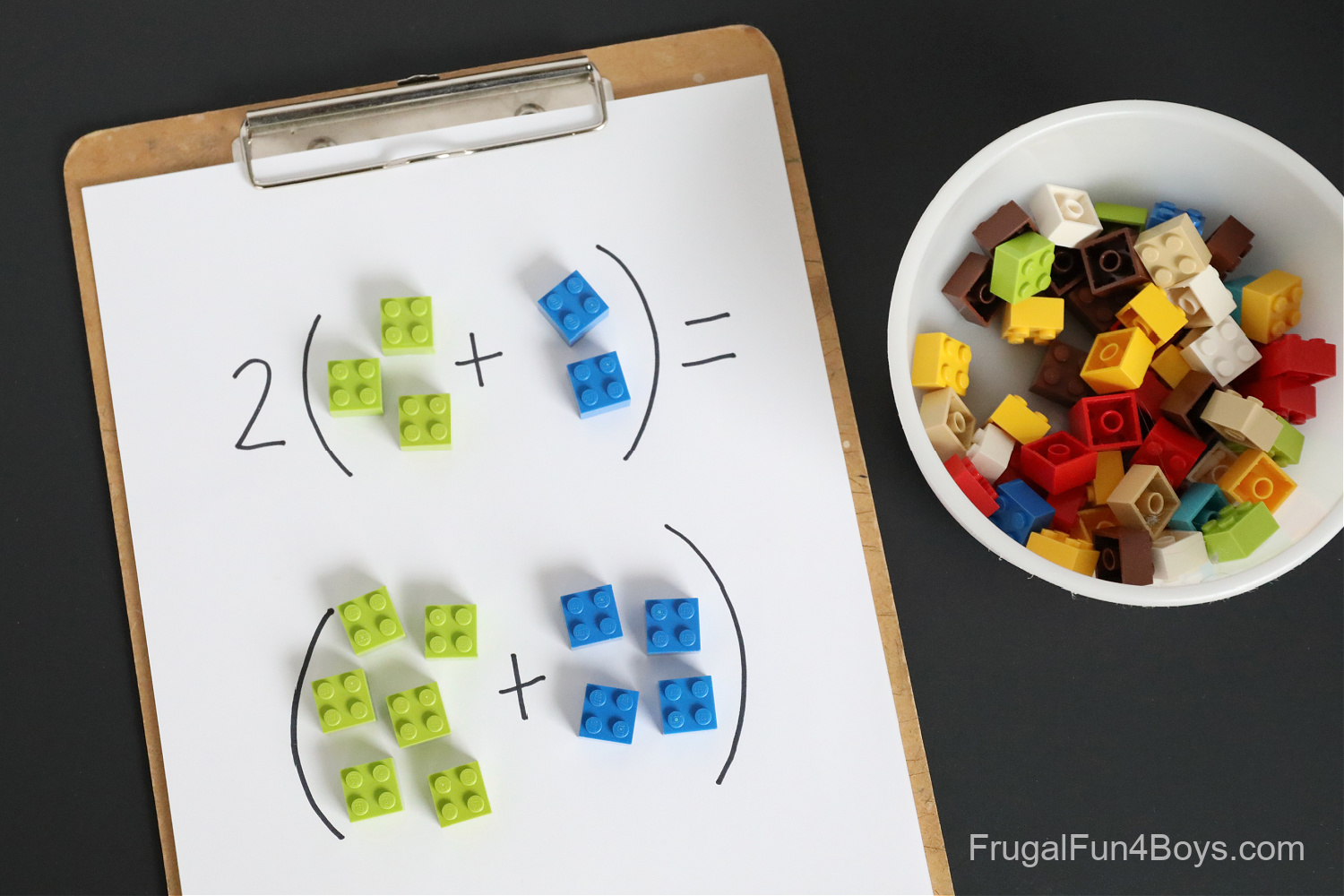
Now here’s another interesting concept we can consider. 5(yellow + red) gives us 5 yellows + 5 reds. Or…
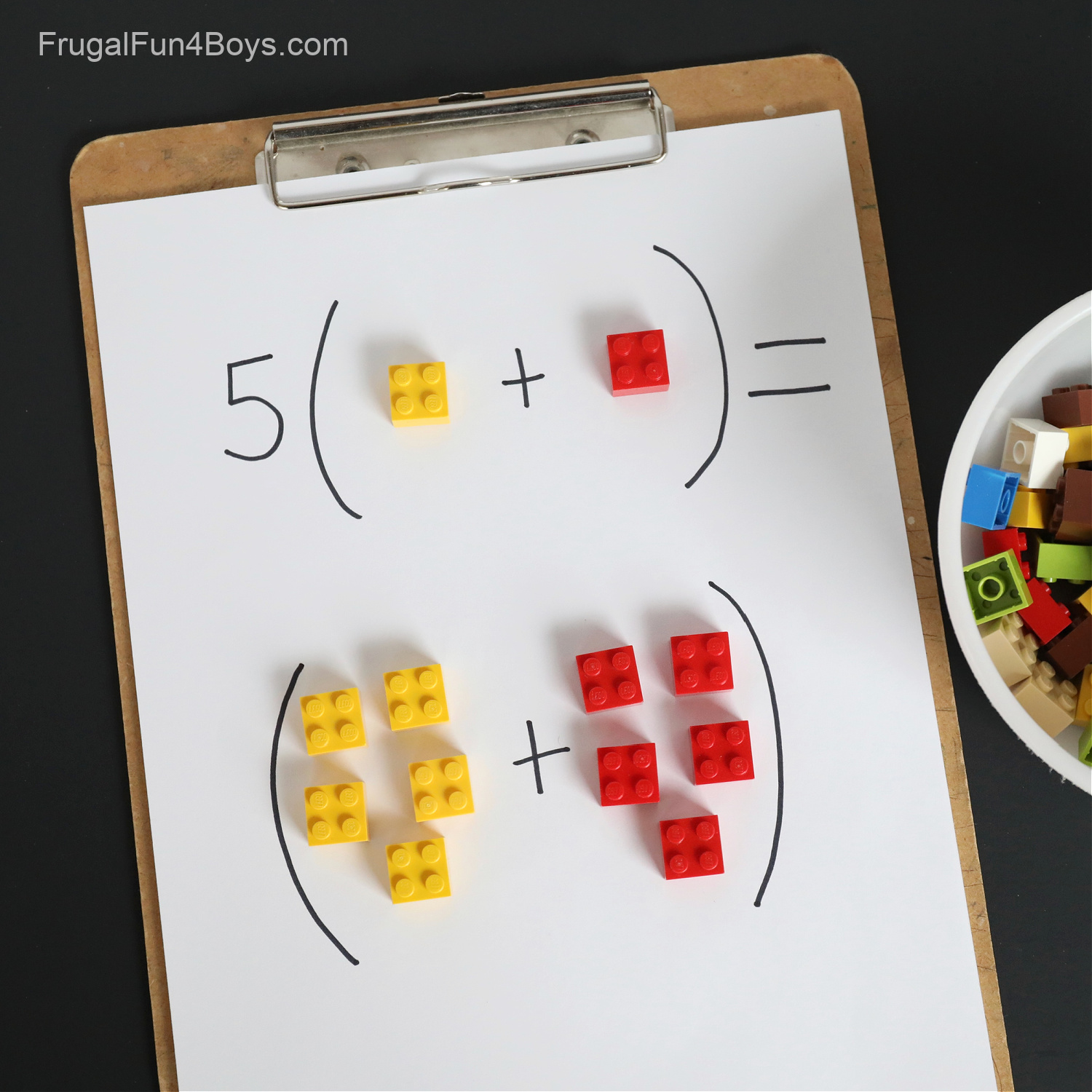
…we can also think of it as 5 sets of yellow + red.
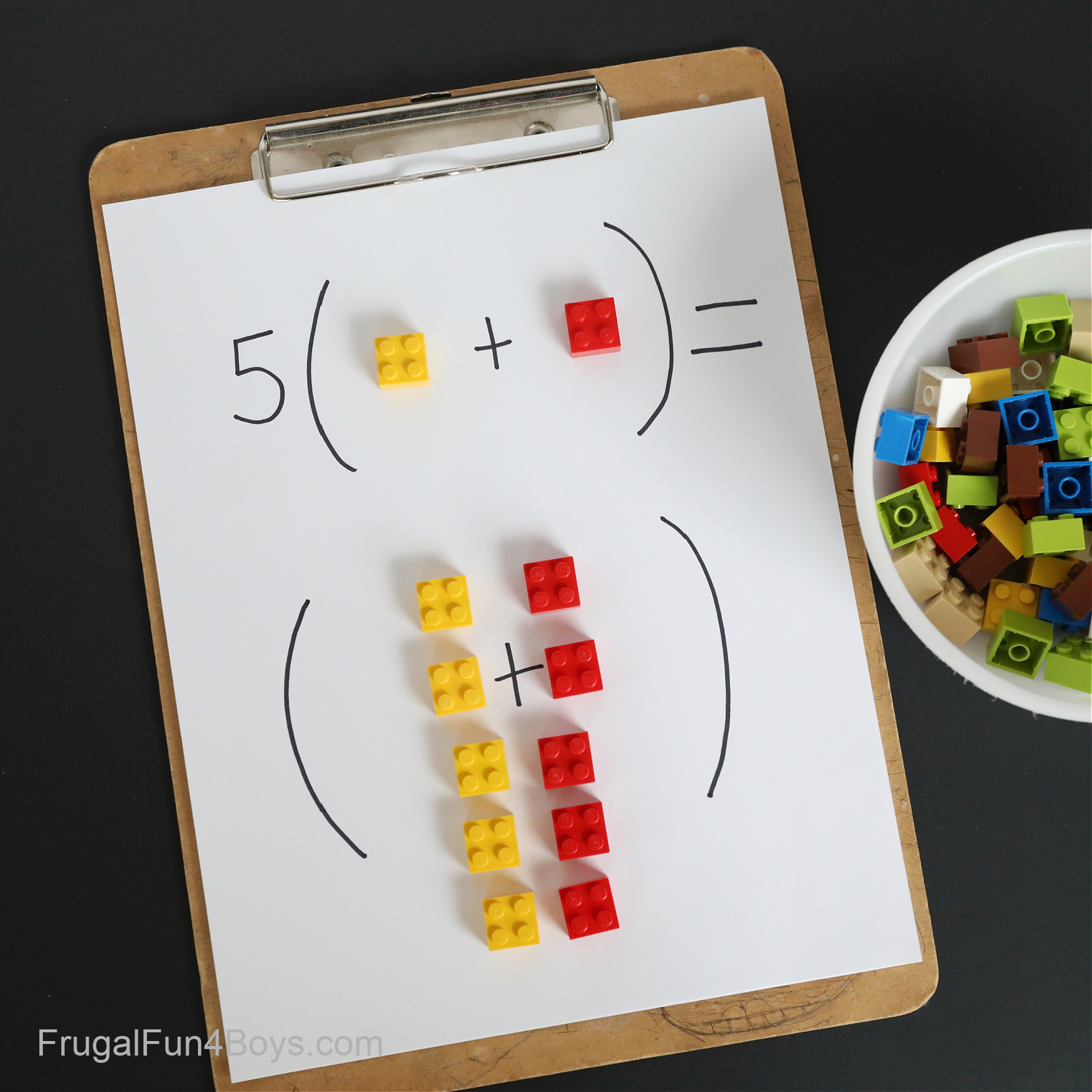
Work Backwards and FACTOR!
After students have mastered the idea of distributing with LEGO bricks, you can work BACKWARDS and try factoring or “un-distributing.” Lots of times in math, we learn how to do something, and then we learn how to un-do it.
I showed the problem below to my current algebra 1 student.
Is there a factor that you can pull out of both blue and red? 2 is a factor of both 8 and 4, but there’s a better option…
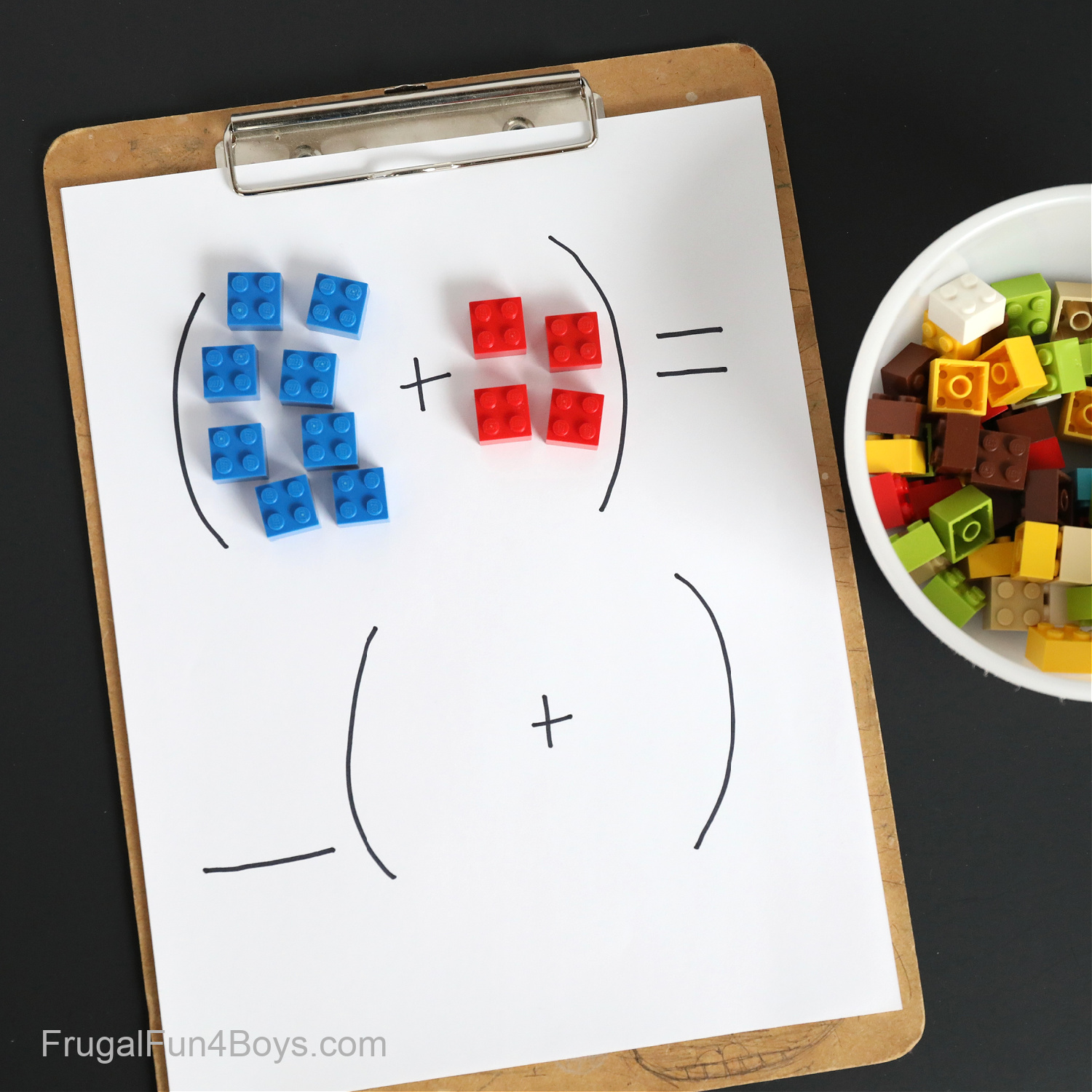
You can pull out a 4 and put it outside the parentheses.
Then you can check by distributing. Does (4 x 2) + (4 x 1 ) = (8 + 4)? Yes it does!

Want More Hands-On Algebra and Pre-Algebra Ideas?
- Here’s a great way to Teach Square Root and Exponents with LEGO Bricks
- You can also use LEGO bricks to let students Discover Prime Numbers

2 Comments
Cathy Feb 20, 2023
This is so good! And when you think about building with legos, for instance... maybe you needed 5 sets of red + yellow. You probably would not gather one red and one yellow. Then another group of red and yellow. And do it 5 times. Probably you would you just gather 5 of each color. Gathering 5 reds and 5 yellows is just easier!
Katrina Feb 20, 2023
Sarah, this is SO helpful! Thank you.
Post a Comment